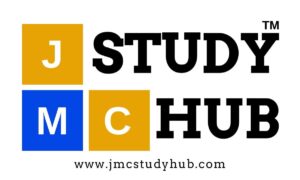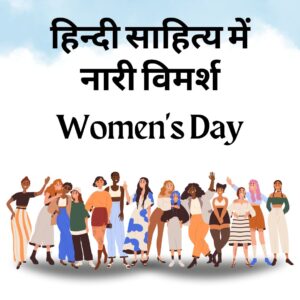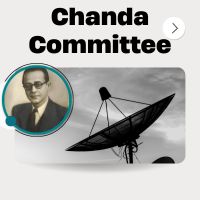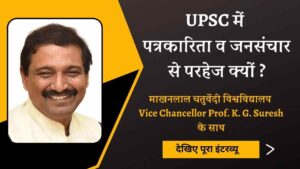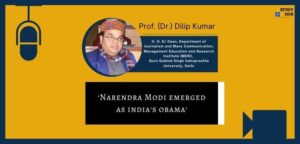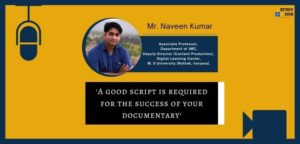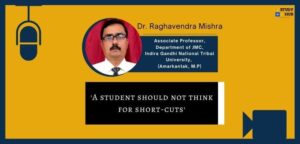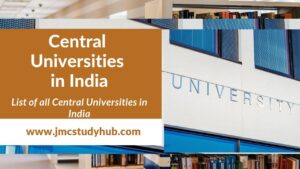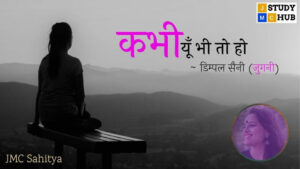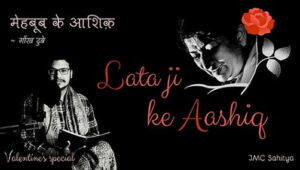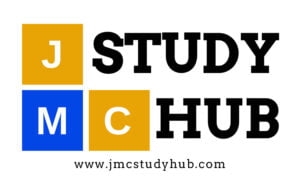Daily Mass Communication Quiz (DMCQ) boost your concepts through day wise solved quiz from the entire course of Journalism and Mass communication (JMC) with detail explanations.
Journalism and Mass Communication Objective Questions (DMCQ)
Q 1. Annie Besant was elected President of the Theosophical Society in
(A) 1889
(B) 1899
(C) 1907
(D) 1909
Correct Answer: (C) 1907
Explanation: Annie Besant had joined the Theosophical Society in 1889. She was a firm believer in the teachings of Vedas and Upanishads. She considered the Indian soil to be so liberating and enlightening at the same time that she took the nation as her own and made it her permanent abode. In 1907, after the death of Colonel Olcott, Besant was made President of the Theosophical Society.
Q 2. Who founded a weekly newspaper Commonweal in January 1914?
(A) Annie Besant
(B) S.N.B banerje
(C) Sir Syed Ahmad Khan
(D) Mahatma Gandhi
Correct Answer: (A) Annie Besant
Explanation: Realising that a newspaper would help propagate her political thoughts, she founded a weekly newspaper in January 1914. In June 1914 she purchased an existing newspaper called ‘Madras Standard’ and renamed it ‘New India’.
Q 3. Who started ‘new India’?
(A) Mahatma Gandhi
(B) Annie Besant
(C) Lord Rippon
(D) Delhousie
Correct Answer: (B) Annie Besant
Explanation: New India was an early 20th century daily newspaper published in India by Annie Besant, to highlight issues related to the Indian freedom struggle.
Besant first visited India in 1893 and later settled there, becoming involved in the Indian nationalist movement. In 1916 she established the Indian Home Rule League, of which she became president. She was also a leading member of the Indian National Congress.
Q 4. Who started ‘Young India’?
(A) Mahatma Gandhi
(B) Annie Besant
(C) Madan Mohan Malviya
(D) Pherozeshah Mehta
Correct Answer: (A) Mahatma Gandhi
Explanation: Young India was a weekly paper or journal in English published by Mohandas Karamchand Gandhi from 1919 to 1931. Gandhi wrote various quotations in this journal that inspired many.
Mahatma Gandhi started the paper young India in order to spread his ideology and thoughts regarding use of nonviolence in organising movements against British.
Q 5. Who started newspaper ‘Harijan’?
(A) Madan Mohan Malviya
(B) Gandhiji
(C) S.N.B banerje
(D) Sir Syed Ahmad Khan
Correct Answer: (B) Gandhiji
Explanation: Mahatma Gandhi began publishing Harijan, a weekly newspaper, in English in 1933. It lasted until 1948. During this time, he also published Harijan Bandu in Gujarati, and Harijan Sevak in Hindi.
Q 6. The Leader was one of the most influential English-language newspapers in India during British Raj which was Founded by ………
(A) S.N.B banerje
(B) Madan Mohan Malviya
(C) Sir Syed Ahmad Khan
(D) K. P. Kesava Menon
Correct Answer: (B) Madan Mohan Malviya
Explanation: The Leader was one of the most influential English-language newspapers in India during British Raj. Founded by Madan Mohan Malviya, the paper was published in Allahabad.
Q 7. Bombay Chronicle was an English-language newspaper started in 1910 by ………….
(A) Sir Pherozeshah Mehta
(B) Madan Mohan Malviya
(C) K. P. Kesava Menon
(D) Gandhiji
Correct Answer: (A) Sir Pherozeshah Mehta
Explanation: In 1910, Pherozeshah Mehta started The Bombay Chronicle, an English-language weekly newspaper, which became an important nationalist voice of its time, and an important chronicler of the political upheavals of a volatile pre-independent India. He served as a member of Bombay’s Municipal Corporation for six years.
Q 8. Mathrubhumi was first published on 18th March, ……….
(A) 1923
(B) 1933
(C) 1935
(D) 1936
Correct Answer: (A) 1923
Explanation: Conceived as the mouthpiece of India’s freedom movement, Mathrubhumi is one of the front-runners among the Malayalam newspapers. The first copy of Mathrubhumi was published on 18th of March 1923, the day before the first anniversary of Mahatma Gandhi’s arrest for the first time by the British police.
Q 9. The founder of ‘Mathrubhumi’, the Malayalam language newspaper was the renowned freedom fighter …………
(A) K. P. Kesava Menon
(B) Madan Mohan Malviya
(C) Jawaharlal Nehru
(D) Annie Besant
Correct Answer: (A) K. P. Kesava Menon
Explanation: Mathrubhumi is a Malayalam newspaper that is published from Kerala, India. It was founded by K. P. Kesava Menon, an active volunteer in the Indian freedom struggle against the British.
Q 10. ‘My Experiments with Truth’ is the biography of …………
(A) Madan Mohan Malviya
(B) Mahatma Gandhi
(C) S.N.B banerje
(D) Sir Syed Ahmad Khan
Correct Answer: (B) Mahatma Gandhi
Explanation: Gandhi’s autobiography, which he had titled ‘My experiments with Truth’ can be rated as one of the most popular and the most influential books in the recent history. It was written at the instance of Swami Anand. It appeared in the Weekly ‘Navjivan’ during 1925-28. It covers Gandhi’s life up to 1920.
